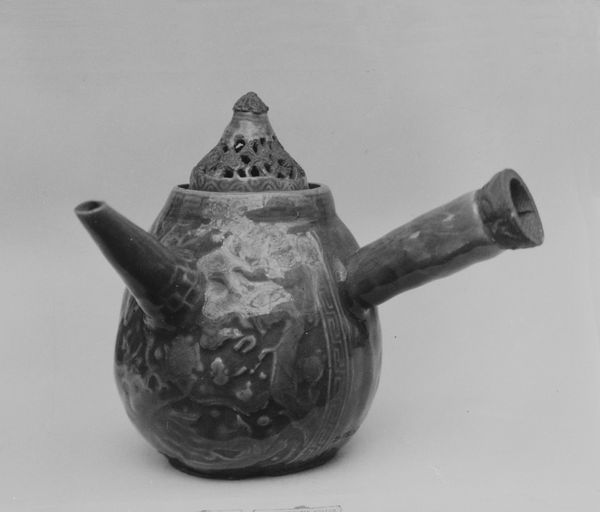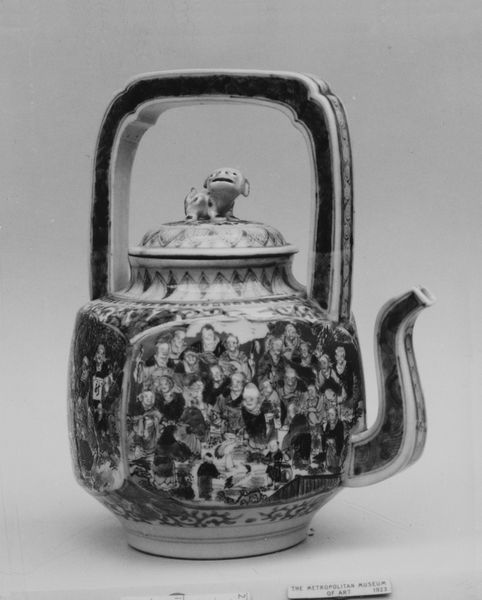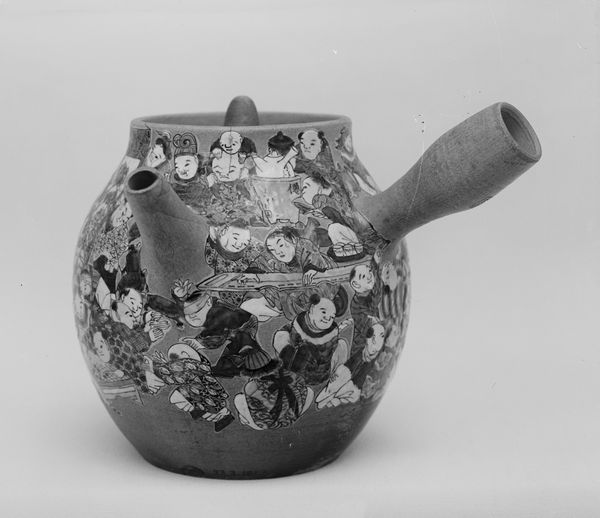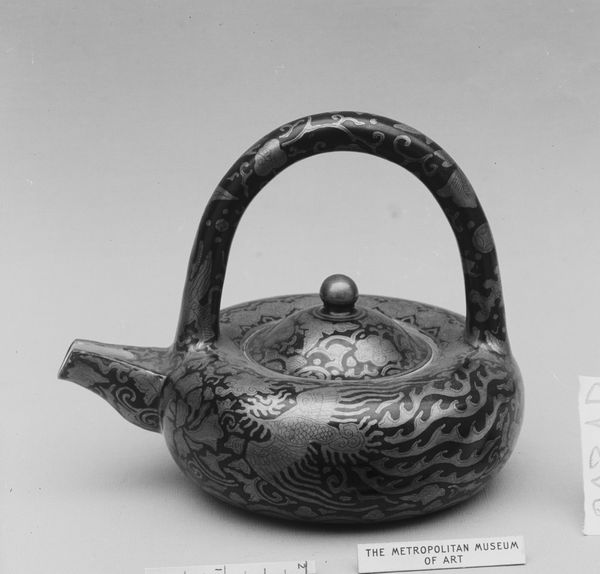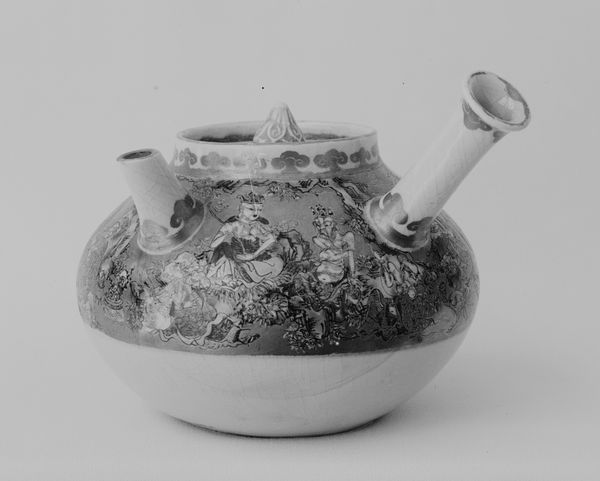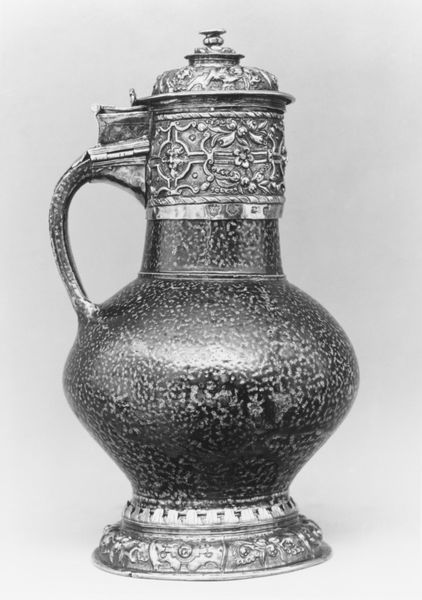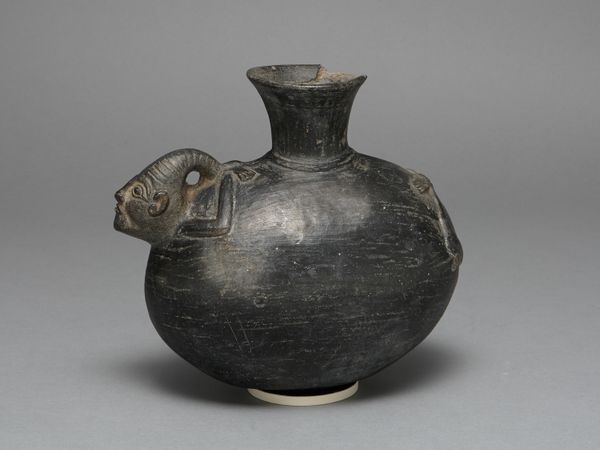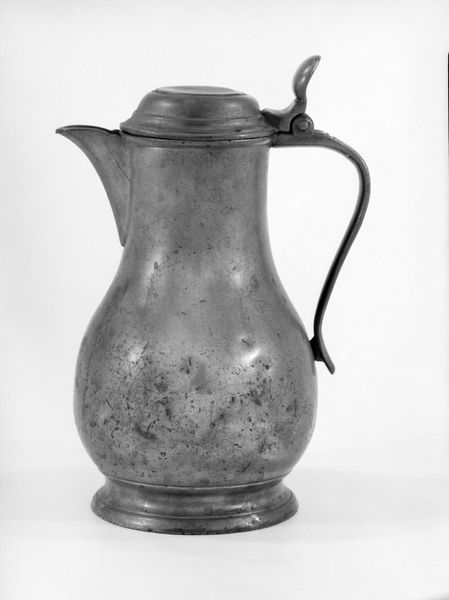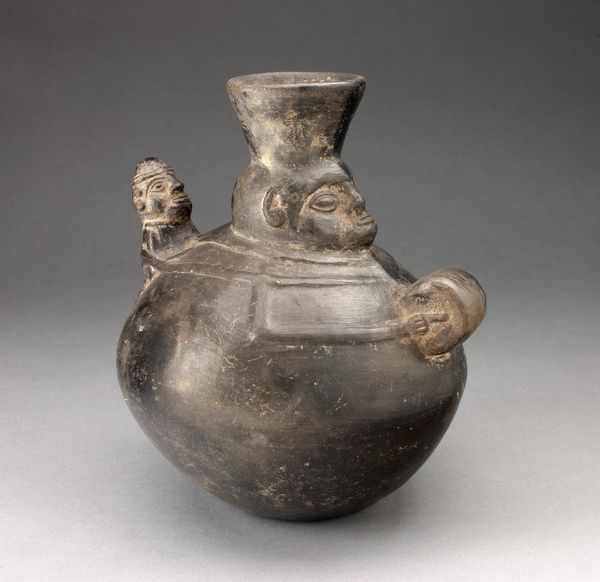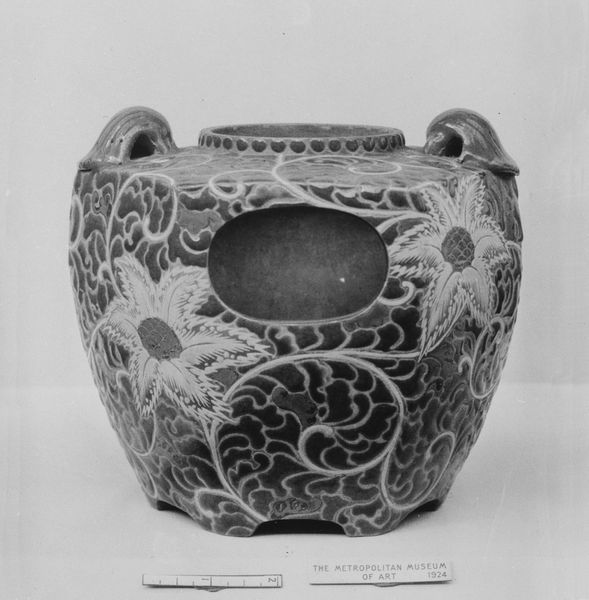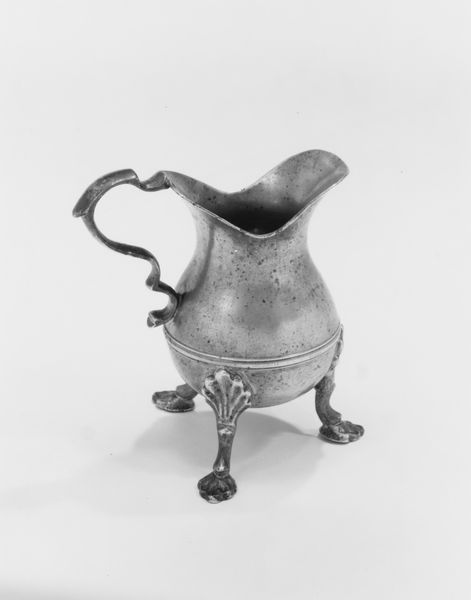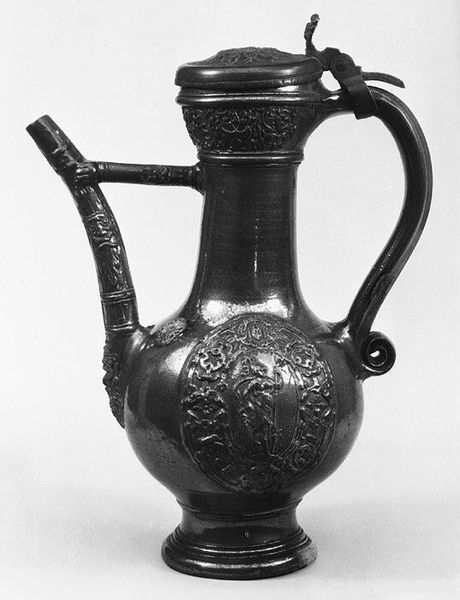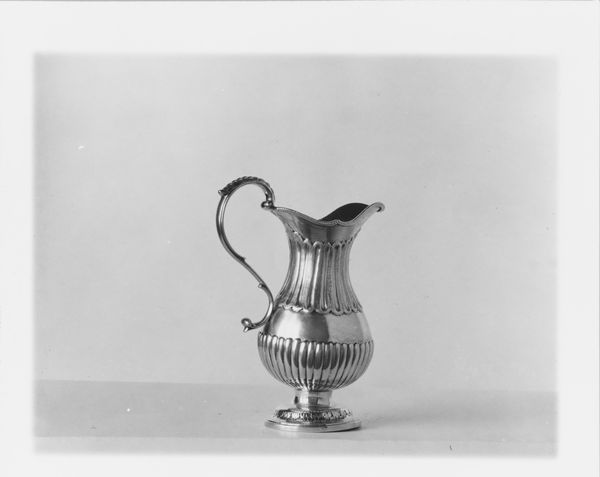
ceramic, sculpture, terracotta
#
sculpture
#
asian-art
#
ceramic
#
sculpture
#
history-painting
#
terracotta
Dimensions: H. 4 5/8 in. (11.7 cm); L. 5 3/4 in. (14.6 cm)
Copyright: Public Domain
Curator: It’s quite striking, isn’t it? A terracotta teapot, crafted around 1800 by Aoki Mokubei. The piece resides here at the Metropolitan Museum of Art. What are your initial thoughts? Editor: Immediately, it strikes me as a narrative object. The sculpted details, even in monochrome, seem incredibly dense and purposeful, hinting at some complex story playing out on its surface. Curator: Precisely! Mokubei’s art often echoed his literati ideals. These weren’t mere decorations; the patterns and figures would likely draw on classical and poetic themes, subtly influencing the tea drinking experience. The vessel becomes more than utilitarian; it becomes a touchstone for cultivated discussion. Editor: So the act of preparing and serving tea becomes imbued with socio-cultural significance through this piece. Considering its era, I imagine it reflected or possibly even shaped the aesthetic sensibilities of a particular social class? The material choice of terracotta too— was that common, or a deliberate decision? Curator: The earthy quality of terracotta, contrasting with more opulent materials like porcelain, could signal a deliberate embrace of wabi-sabi aesthetics. While it did offer certain advantages for heating and retaining warmth in tea, the terracotta could act as a conscious expression against displays of excessive wealth. It's the restraint, the deliberate imperfection, that resonates here. And yes, this was undoubtedly influential within literary and artistic circles. Editor: It's intriguing how a seemingly simple object carries such loaded symbolism. The texture almost seems to invite touch, urging the user to feel the narrative. Were similar teapots displayed or actively used? Because with this level of intricate sculpting, they certainly had function *and* message. Curator: Likely both, the use and display. Within the Japanese tea ceremony, every implement has symbolic meaning and affects the flow of conversation. A piece like this may well have been a conversation starter itself, loaded with possible historical or literary allusions intended for the informed participant to recognize. Editor: So, looking at this teapot gives insight into not only material culture of 19th-century Japan but reveals the role of artistic objects to enhance human interactions within a specific socio-cultural context. Fascinating. Curator: Exactly! A convergence of art, social history, and even literary study within the humblest of vessels.
Comments
No comments
Be the first to comment and join the conversation on the ultimate creative platform.
